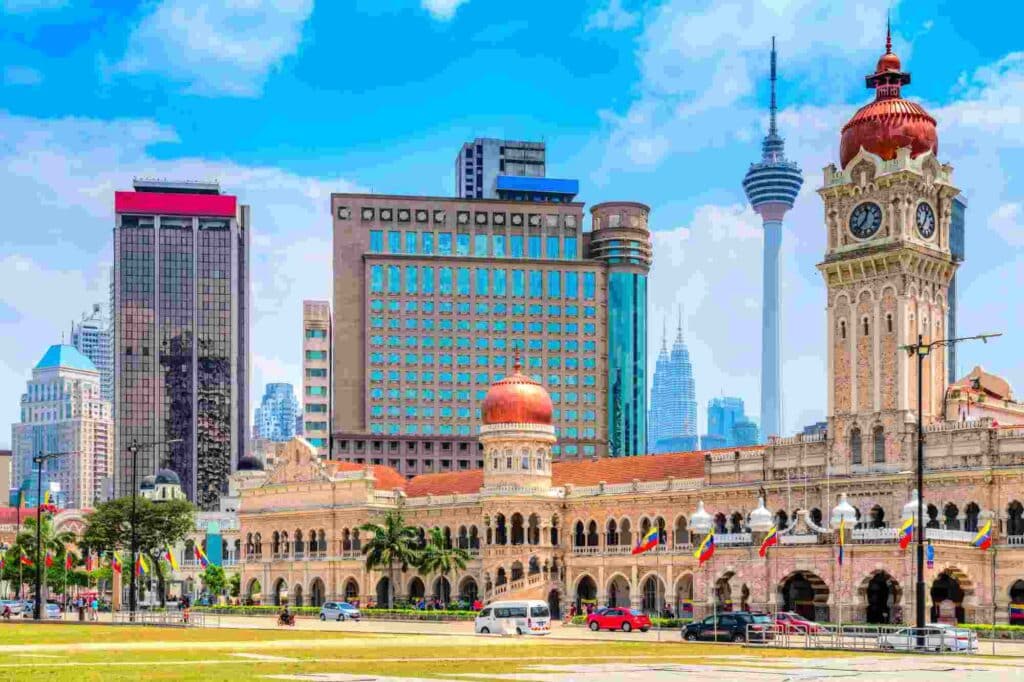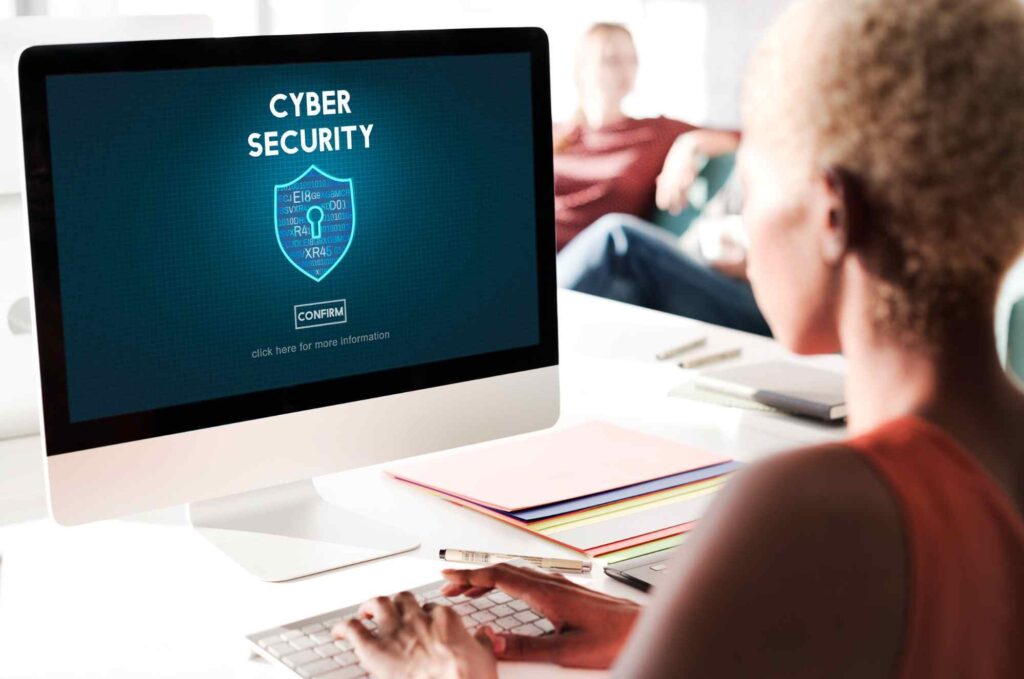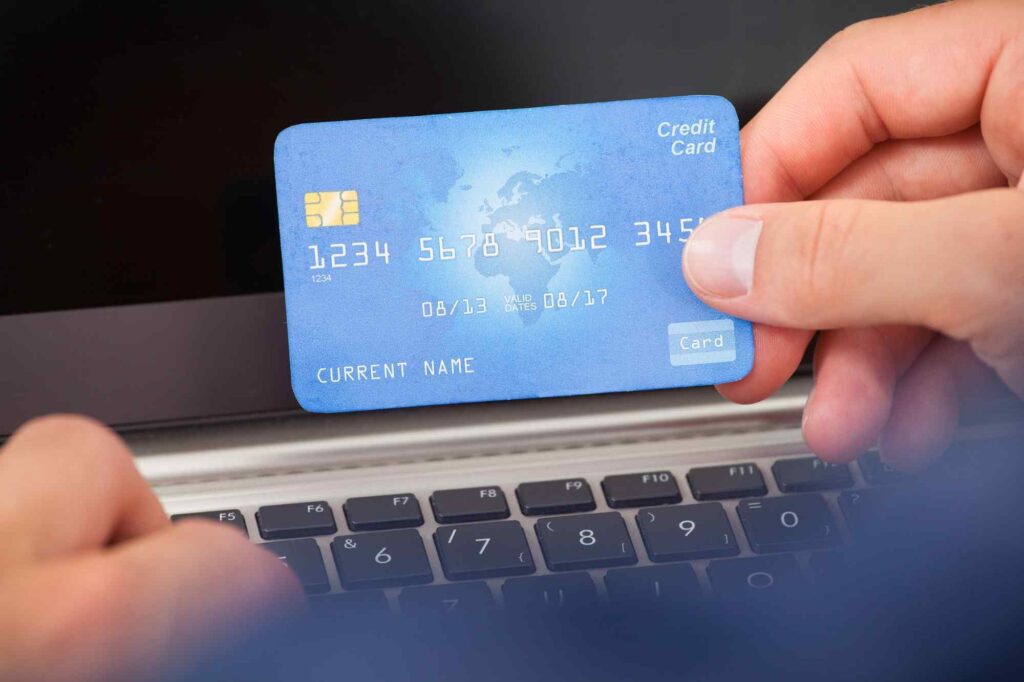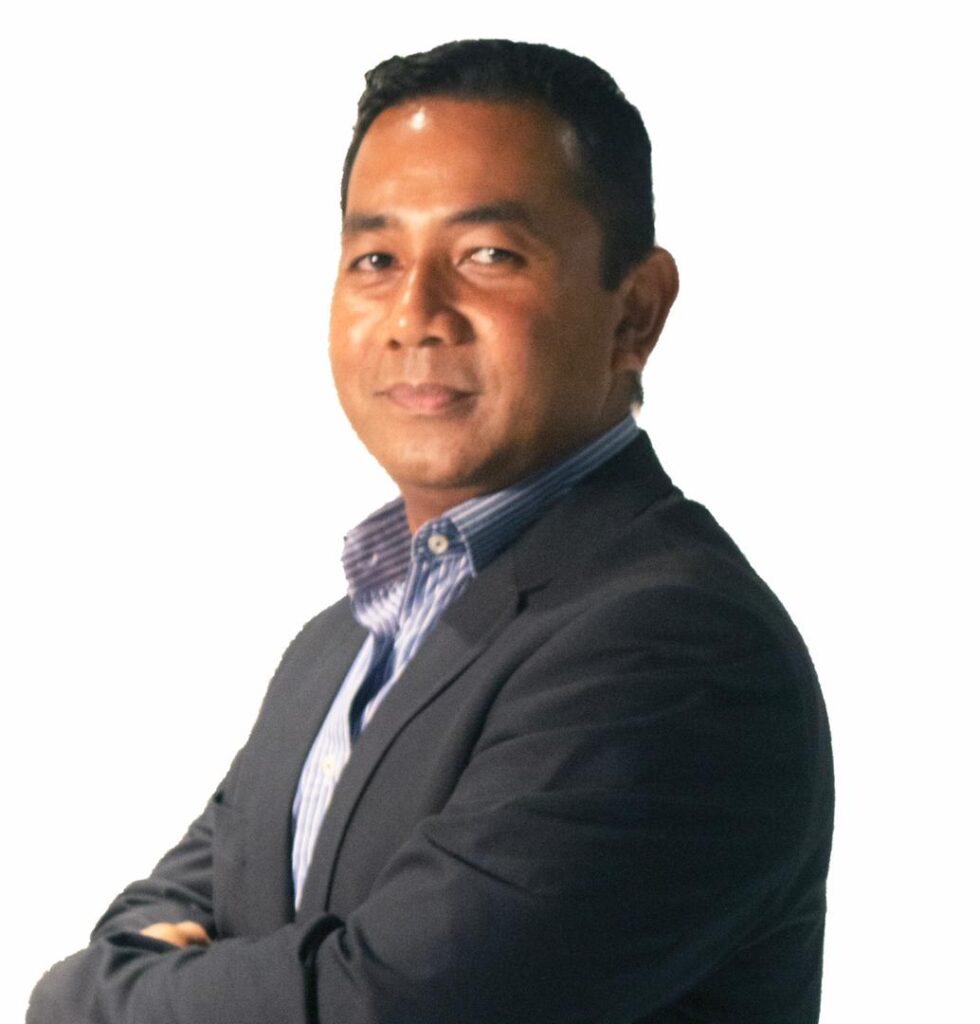

The rise of digital banking and accelerated digital transformation have brought about new security concerns. Criminals are turning their attention to gullible online users, creating ever-so sophisticated scamming schemes to defraud them. At the enterprise level, threat actors are opportunistically using the shifting work environment to adopt tactics to infiltrate organisations.
Statistics1 from the Commercial Crime Investigation Department at the Royal Malaysia Police show that cybercrime is skyrocketing as consumers shift to online channels.
Between 2017 and June 20, 2021, Malaysians suffered losses amounting to about RM2.23 billion (US$533 million) from cybercrime frauds.
Of the 67,552 cybercrime cases reported during the period, e-commerce scams topped the chart with 23,011 cases. Meanwhile, complaints on online transactions surged 112% between 2019 and 2020, indicating that cybercriminals are looking to capitalise on the surge in e-commerce activity and rapid consumer adoption of digital financial solutions amid the new normal brought about by the COVID-19.
The pandemic forced consumers to turn to online retailers to buy groceries and e-wallets to pay their bills. A survey conducted2 by Kaspersky and research agency YouGov found that out of the 1,600+ respondents in Asia-Pacific (APAC) polled, 90% indicated having used mobile payment applications at least once in the past 12 months. Around 15% of the total survey respondents said they began using digital payment methods during the pandemic.

At the enterprise-level, cyber threats are exploding as well. The 2022 IBM Security X-Force Threat Intelligence Index, released3 last month, revealed that Asia has become the most attacked region globally, with over one in four cyber attacks recorded by the tech firm last year targeting users in the continent.
Asia saw more cyber attacks than any other region in the past year, the report says, with financial services and manufacturing organisations in particular experiencing nearly a combined 60% of attacks in Asia.
Server access attacks, where the attacker gains unauthorised access to a server, was the second-most common attack type observed, making up 11% of all incidents IBM’s X-Force IR team remediated in 2021. The majority of these attacks occurred in Asia, and in many cases the threat actors were successful in deploying malware or employing penetration testing tools on a server, the report indicates.
The pandemic has accelerated digital transformation and forced people to change the way they worked, transacted, and banked. This unprecedented speed of digital transformation is putting stress on banks’ IT systems, compromising real-time data analysis, and creating storage and security issues.
A recent survey4 of 305 global bank COOs and CTOs conducted by data-monitoring and management company - ITRS Group, found alarmingly weak operational resilience at financial institutions in the wake of COVID-19.
84% of respondents stated that their IT environment has changed more in the past 12 months than over their company’s lifespan, with digital transformation, work-from-home arrangements, cloud adoption, and more sophisticated security threats cited as the top drivers of change in banks’ IT environment. The figure stands even higher for APAC-based institutions where the velocity of IT change was found to be the greatest.
Globally, 79% of respondents indicated that it has become increasingly difficult for their institution to maintain their SLAs, or service-level agreements, with more than half stating that they suffered at least one business day of unplanned downtime every year.
Additionally, 94% stated that digital transformation has resulted in a significant increase in the volume of data, leading to challenges in analysing data in real-time (65%), storing data (62%), and difficulties in securing data (62%), creating a concerning trend.

As more people rely on digital payments and get accustomed to digital services, awareness of cyber risks and crime is also on the rise.
In fact, security is becoming consumers’ top concern, with 67% of Southeast Asian respondents polled by Kaspersky and YouGov indicating that they hope for the implementation of one-time passwords (OTPs) through SMS for every transaction.
After OTPs, two-factor authentication was named the second most preferred security feature (57%), while 56% of respondents said biometric security features, like facial or fingerprint recognition, should be added for digital banking and e-wallets.
Going even further, a considerable proportion of consumers believe that financial services providers should play a bigger role in protecting their customers from being defrauded. In fact, 40% of respondents indicated that banks and mobile wallet companies should “start preventing frauds/scams automatically based on spending behavior and/or transfer history.”
With increasing international cooperation and the establishment of multiple task forces to trace ransomware gangs, Kaspersky experts believe the number of such attacks will decrease in 2022.
Instead, cybercriminals will turn to more advanced scams and social engineering as they seek to exploit human and system vulnerabilities. These scams will leverage all sorts of tools and channels, ranging from SMS and automated phone calls to messaging apps and social networks, and will be fueled by the availability of advanced technologies such as deepfake and voice synthesis, the experts said, quoted5 by Vietnam News.
In Thailand, nearly 40,000 people were scammed with their bank accounts and credit cards showing inexplicable transactions. In Malaysia, scammers used fake bank websites to steal customers banking details. And in Vietnam, criminals impersonated top e-commerce platforms to trick users into sending money.

Kaspersky experts predict a significant wave of attacks on cryptocurrency businesses, a trend that started in 2019 and which coincides with the beginning of the cryptocurrency market’s bull run.
Figures from blockchain data platform Chainalysis show6 that cryptocurrency-based crime, including scams, ransomware, and stolen funds, hit a new all-time high in 2021, with illicit addresses receiving US$14 billion over the course of the year, up 79% from RM32.91 billion (US$7.8 billion) in 2020.
Kaspersky experts said they have already witnessed advanced persistent threat (APT) groups rising to attack the cryptocurrency business aggressively, and they anticipate that this activity will continue as criminals increasingly exploit flawed security and resort to advanced techniques including manufacturing and retailing rogue devices with backdoors and social engineering campaigns to steal cryptocurrencies. Cryptocurrencies are particularly attractive to criminals, considering the anonymity they provide.
Southeast Asia could be more vulnerable than other countries, considering that consumers in these locations are known for being avid adopters of cryptocurrencies and non-fungible tokens (NFTs). Among 20 countries surveyed by Kaspersky, the Philippines was found to have the highest adopter rate of 32% of Filipinos indicating owning digital assets. This is followed by Thailand (26.2%), ranked second, then Malaysia (23.9%). Vietnam (17.4%) was fifth and Singapore (6.8%) 14th.

The urgency of addressing the relentless surge of cyber threats impacting both the public and business sectors is a fundamental step to enabling a sustainable, safe and successful digital society. As a key player in digital transformation for companies across industries, TM One's commitment to cybersecurity helps to create a safe and secure online environment for businesses and protect consumers from fraud and identity theft.
TM One has collaborated with CyberSecurity Malaysia, the national cybersecurity specialist agency, to elevate the nation’s cybersecurity network and ecosystem while strengthening Malaysia’s self-reliance in cyberspace.

“At TM One, we understand that new technologies are driving the accelerated digital transformation for many industries, allowing players to respond quickly to changes as well as provide customers with better digital experiences. Having a strong cybersecurity foundation will benefit Malaysian financial institutions not only mitigate cyber risk, but boost performance. Our Managed Security Services are designed to meet the specific needs of financial institutions and take their digital transformation forward to effectively improve operations, address compliance requirements, and enable open ecosystems,” said Muhammad Ghadaffi Mohd Tairobi, Director of Sales for Banking and Financial Services at TM One.
Do you know what are the key sources of cyber risk in Malaysia? Click here to download the infographics.
This article was first published by FinTech News Malaysia
References
1. https://www.nst.com.my/news/crime-courts/2021/07/708911/malaysians-suffered-rm223-billion-losses-cyber-crime-frauds
2. https://newsinfo.inquirer.net/1552270/threat-awareness-high-as-digital-banking-users-list-preferred-security-steps
3. https://www.ibm.com/downloads/cas/ADLMYLAZ
4. https://www.itrsgroup.com/a-global-operational-resilience-survey
5. https://vietnamnews.vn/economy/1141324/advanced-scams-data-breaches-crypto-and-nft-attacks-imminent-in-southeast-asia-kaspersky.html
6. https://blog.chainalysis.com/reports/2022-crypto-crime-report-introduction/
7. https://www.tmone.com.my/solutions/cybersecurity-services/bfsi-infographic/?utm_medium=cybersecuritypage&utm_source=TMONE&utm_campaign=CYDEC
The city of Ipoh has been recognised as one of the most attractive destinations in Asia to visit. The Ipoh City Council (MBI) has mapped out the Ipoh Smart City 2030 aspirations to create a more livable city that is able to address various urban challenges and places it at par with other global smart cities.
Find out how MBI, in collaboration with TM One, realises the aspiration towards a smarter Ipoh!
To learn more about TM One's smart services, Contact us here.
According to Telekom Malaysia's enterprise and public sector solutions arm TM One,1 Malaysia's economic resurgence in the post-pandemic world will greatly benefit by adopting a human-centred approach to digital transformation, especially amid a tsunami of rapidly advancing technologies.

In an in-depth Disruptive.Asia 2022 outlook interview with Shazurawati Abd Karim, who as Executive Vice President is at the helm of TM One, said that the company's people first approach has invigorated much of TM One's aims to sensitively contribute to the growth of Digital Malaysia.
Last year, the nation's digital aspirations saw fresh impetus from MyDIGITAL 2 and expectations from a government-driven 5G rollout are high. According to the Chinese calendar, 2022 is the Year of the Tiger, and various industry leaders have already sounded the roar towards rapid recovery.
Shazurawati agrees that in common with the global experience, Malaysia's recovery efforts in 2021 were hampered by challenges related largely to new strains of COVID-19. Although the year, which was widely envisioned by many pundits as the year of recovery, did not transpire as hoped, TM One still managed to achieve several significant breakthroughs, and is well positioned to deliver on several digital nation building fronts, she said. "On reflection, we planned 2021 as the year of recovery; unfortunately, in common with the rest of the world, we found that COVID-19 continued to peak, which meant that the MCOs (movement control orders) and other challenges slowed down forward movement."
TM One's focus on catalysing Malaysia's business and government sectors has seen the joining together of important pieces of the jigsaw, she said.
"By the end of the 2021, we made many positive advances: We are happy to have continued to support our customers, the public and the government. From a business perspective, our performance of driving cloud adoption in 2021 has been phenomenal from a year-on-year growth perspective," she said, and detailed some of these milestones, which are summarised below.
"One defining moment is when we enhanced the capabilities of α Edge (Cloud Alpha) 3 with AI last year - thus becoming an Intelligent Industry Cloud Platform, with full stack hyperscaler capabilities hosted at TM One's Tier-III Data Centre in Malaysia. This is Malaysia's only hyperscaler cloud with end to end services, which meet local, residency and sovereignty data requirements as well as AI-capabilities that comply with the highest industry standards ."
This prepared the ground for another defining moment when TM was appointed by the government as the only local Cloud Service Provider (CSP)4 to play a pivotal role within the MyDIGITAL initiative to support Government agencies' digital transformation journey. 5
Announced in early 2020, MyDIGITAL is the country's 10-year bid to vitalise its digital economy trajectory, the objectives of which include boosting digital economy contributions to 22.6% of national gross domestic product (GDP) by 2025 as well as opening up 500,000 new job opportunities.
On the commercial front, Shazurawati said that the end-to-end cloud solution has bolstered businesses operations by offering an array of much-needed benefits future-fit organisations: artificial intelligence capabilities to support all types of business innovation; machine learning (ML) functionalities to deliver actionable insights at greater speeds; edge computing to process data close to collection points; resource monitoring tools for identity and access management; advanced security tools and cybersecurity support to enable continuous real-time visibility and predictive protection.
"As well as providing peace of mind to organisations when hosting critical applications and classified data, industry verticals across the board were in a better position to boost their productivity and performance especially during these challenging times," she continued.
"Some other defining moments for us in 2021 was the continued broadening of our services beyond Malaysia, when a leading global provider of smart devices, HONOR adopted TM One Cloud solutions to serve its customers across three continents 6 - Asia, Africa and Latin America."
Some other cited examples included the Ministry of Education's use of α Edge to host its platform, enabling the simultaneous processing of large number of queries (such as exam results) – 15.4 mil queries, with 8.3 mil queries during peak hour.
Shazurawati also recalled other instances such as some collaborations with top Malaysian banks that used secured digital solutions and infrastructure to enrich their digital financial services and upscale digital banking adoption.
In addition, the provisioning of end to end managed network and security services across the industry verticals remain steadfast.
Shazurawati also pointed to TM’s role of forging strong relationships with global telco and content partners to strengthen Malaysia’s position on the global front as a preferred digital destination and business hub.
“We are very proud of another defining moment for our cloud services in 2021 - we made a big leap forward in cybersecurity and also with partnerships with some of the global telcos such as Telefonica, 7 for example."
TM One accrued a long record of distinction, including the latest array of records such as:
"So 2021 was indeed a year of fortifying our building blocks of connectivity, cloud services, smart services and on bringing these benefits to more people," she said, before turning to deeper strategic drivers.
IDC ASEAN Senior Research Manager for ASEAN recently noted that organisations in the region are striving to both innovate and generate revenue from digital products and services and to also be part of the ever-growing and evolving industry ecosystems. “We will see more and more ASEAN enterprises of the future forging partnerships and collaboration with ecosystem players to derive value from shared data, applications, and operations initiatives. This will only lead to the birth of innovative products, services as well as better engagement and experience for customers.”
IDC's top two ASEAN predictions for 2022 9 are underpinned by the rise of all things digital:
Indeed, the speed of transformation around the world is constrained by talent and skills' gaps, resistance to change and of course connectivity infrastructure concerns. The challenge of managing and unlocking value from the ongoing explosion of data in a digitalised economy also requires a greater commitment to inclusivity of people.
In the recent signing of a memorandum of agreement by OECD (Organisation for Economic Co-operation and Development) Secretary General Mathias Cormann and ASEAN Secretary General Dato Lim Jock Hoi , 10 the objectives include promoting and accelerating digitalisation with an emphasis on driving infrastructures that include peoples, regions and businesses.
Shazurawati further explained that TM One is working closely with the regulator MCMC (Malaysian Communications and Multimedia Commission) and other government entities to help open up digital training for people across the nation to take up digital economy opportunities.
“Formerly known as Internet Community Centres, we have supported MCMC transformed these into Digital Community Centres. In addition to internet broadband connections, people can now go to learn about becoming ‘digital enterprises’ - and we help them connect to logistics providers, obtaining grants, and to use collaboration, marketing and digital tools necessary to participate in the digital economy. These are part of TM’s role to improve the country’s digital connectivity through enhanced broadband coverage and quality to homes and businesses."
TM One has continued to reiterate its role is to provide end-to-end robust and secure digital solutions to harness the power of IR 4.0, AI, Big Data and IoT, to enable national digital adoption, Shazurawati further explained.
“These initiatives are aligned to the government programmes such as Jalinan Digital Negara (JENDELA11) – which focuses providing wider coverage and better quality of broadband experience for the people, whilst preparing the country for 5G technology," said Shazurawati.
"To tackle the pandemic, we have been providing the internet coverage and PPEs [personal protective equipment] for frontliners at PPVs (vaccination centres), supporting CPRC/CRC (Crisis Preparedness and Response Centre) implementation,12 and the Covid-19 Volunteer Program - ‘Greater Klang Valley Task Force’ initiative."
With an emphasis on efficient data handling, TM One is committed to working closely with all the key essential services relating to the Ministry of Health, among other programmes. "We came in very strong and very quickly to digitally support the Task Force with their essential tasks for the citizens and are working closely with the Ministry."
And what of the near future? There is a trend of stabilisation - one of IDC’s 2022 predictions spotlights ‘scaling with knowledge’ and foresees that 25% of large enterprises will see 20% improvement in information usage by 2026 due to investments in intelligent knowledge networks to turn structured/unstructured data into findable and actionable knowledge.
Another of its predictions predicates that an evidence-based culture is ‘paramount for digital-first enterprises: By 2026, 20% of organisations will use forms of behavioural economics and AI/ML-driven insights to nudge employees' actions leading to a 60% increase in desired outcomes.
Other IDC expectations stress that digital infrastructure is at the core of future enterprises: By 2025, a 6X explosion in high dependency workloads leads to 65% of ASEAN top 500 companies using consistent architectural governance frameworks to ensure compliance reporting and audit of their infrastructure.
Technology is a key tool to build sustainable growth, she said. This echoes is being enabled through the direct and indirect effects of the application of digital technologies and techniques on organisational and economic conditions on the one hand and new products and services on the other.
Meanwhile, speaking of the business value of IT, IDC concurs that by 2024, digital-first enterprises will enable empathetic customer experiences and resilient operating models by shifting 50% of all tech and services spending to 'as-a-service' and outcomes-centric models.
"We are fully aware when that Digital Services' market consumption is almost three times more than the basic levels of communication and connectivity consumption," she noted, adding that the company is probing further value propositions, capabilities and capacities to benefit verticals' evolution into transformation and automation.
Shazurawati also affirmed that smart services will be catalysed by the nation’s 5G rollout, which will help improve the economics of scales of Malaysia, and taps ongoing mobility trends in Malaysia and across the region.
Just one impact from COVID-19 during the last two years is the amplification of mobile- or remote-driven digitalisation of the global economy, with Asia, as noted earlier emerging as a high potential growth area.
“Essentially, we are already working as if In the endemic phase to a great extent and are back in the office 60% and have adopted a hybrid working model," commented Shazurawati. "For this year, our ambition includes growing mobile. We are excited about putting more focus on mobile enterprise."
Building on what she recently commented in detail about 5G opening a new era for the industry in December 2021,13 she adds that the concept of smart cities presents a practical path and model for actualising the real benefits to people and the economy of 5G. "Smart communities will become key growth engines and beneficiaries of 5G. Global spending on smart city solutions is expected to reach US$2.5 trillion by the year 2026. Smart cities essentially involve using sensors based on IoT, which will generate large amounts of data. 5G will provide higher speeds and more capacity to handle data coming in from multiple devices such as sensors, cameras, cell phones and other sources."
When looking ahead, one of the most striking findings to bear in mind was posited by Google, Temasek, and Bain & Company's recent e-Conomy SEA 2021 Report,14 which declared that 40 million new internet users had come online in 2021, and ramped up the internet penetration in Southeast Asia (SEA) to an impressive 75%.
Within this dynamic, Malaysia's internet economy has rebounded strongly. Bain's analysis found that the country's 2021 gross merchandise value (GMV) reached a 47% year-on-year surge and is expected to hit a total value of $21 billion. With a strong 68% eCommerce growth, Malaysia’s overall internet sector saw a rebound of double-digit year-on-year growth and is expected to reach $35 billion in 2025.
Connectivity infrastructure and smart services are quietly enabling this digital economy growth, which includes digital financial services, along with food, transport and logistics and so forth. Shazurawati went on to detail TM One's work across multiple verticals - touching on manufacturing, education, and healthcare examples.
"Smart Manufacturing is gaining traction," she remarked. "And we have seen a heightening of activity in education with the private education sector ramping up cloud adoption to drive hybrid learning - another buzzword from the pandemic phase. Hybrid learning has embarked on an exciting journey, which is in tandem with increased digitalisation of healthcare."
Shazurawati said many collaborative initiatives are under discussion in several verticals. "We are seeing more resolve when it comes to enabling data sharing; and this is in response to the public's expectations for more seamless, better service levels - for instance, individual patient care across a group of hospitals."
"Local councils are also adopting smart services as a pathway to address the challenges of improving productivity and services in highly competitive times, enhancing safety and security, reducing accidents at work, the need to automate certain operations and so deploy staff to higher value work, etc."
Shazurawati said there are many use cases of digital adoption by local authorities and government with many more to come.
"The bottom line is that the more we can serve, the happier the people will become, and generate even better service levels, which contributes to a better bottom line at the same time. Within public sector, we see a desire and ambition to do advance this."
Speaking of TM One, she said the company culture has ramped the momentum of nurturing a high performance future workforce through upskilling and re-skilling programmes and growing current subject matter experts.
"TM One and the Group is digitising business processes and introducing tools and apps to deliver more robust and efficient execution," she said, adding that Environmental, Social and Governance (ESG) is becoming foundational in managing relationships with employees, suppliers, customers, and the surrounding communities.
On a broader level, she holds that: “Malaysians are absolutely resilient, and have a youthful mindset, which helps us embrace changes quite well. For example, we saw how in the recent flood crises, how tough people were, and how when faced by challenges, people came together to help: so this bodes well for the future."
“Everybody has learned much of what works and what we all will need to work in the near future. We are moving in the right direction and there is a desire and growing commitment across all sectors to move forward and be better."
“This is encouraging for us especially as we just at the beginning of the new year, and we are in the midst of many collaborative initiatives, and co-creation discussions," she adds.
"Much of the motivation among leadership conversations in Malaysia is naturally driven on solving challenges: How can we do this better? For example, precise agriculture (in farming), I saw recently we are cultivating a fish (not native to Malaysia) that produces caviar. Modern farming with technologically controlled environments demonstrate that location is no longer an issue," she said. "In addition, I truly believe that for us to really move for forward and deliver sustainable, impactful outcomes depends on cooperation and collaboration, and unlocking the talents within us all."
Malaysia has an enormous opportunity to recover lost ground during the pandemic years, and to accelerate its development as a digital nation.
"Our focus is to put forth a people-first approach to digital transformation via human-centred technology – serving the digital needs of the people and focusing on the usability benefits," she said, adding that this translates into developing digital solutions that make customers’ lives and jobs better and driving more digitalised ways of working within TM One.
"We will continue to invest in our people, infrastructure and technology to be ready for the next wave of innovation, in order to deliver delightful customer experience."
Shazurawati concluded that digitalisation will continue to accelerate in the post-pandemic era. "Many projects were put on hold last year because of uncertainty about how to advance these. Businesses are now more convinced and have the appetite and information to move forward. I am happy with the momentum thus far and believe we will continue to move forward as a whole this year."
"In this year of the Tiger, we are set to roar ahead on all fronts! We will continue to adapt agilely. and sharpen our digital and service capabilities to strengthen our value as partners and moving forwards beyond recovery and accelerated growth."
URL LINKS :
myNEWS is one of TM One's many existing customers that has successfully integrated TM One SD-WAN services into their business.
With TM One SD-WAN, they can now leverage secure and seamless connectivity to their remote branches which also helps to optimise their IT team's productivity. myNEWS is enjoying new features which enable cashless transactions and in return increase customer spending in its stores nationwide.
Watch this video and know more about myNEWS' journey towards greatness, enabled by TM One SD-WAN.
To learn more about TM One's connectivity services, Contact us here.
To better serve their citizens, state officials in Perak partnered with TM One to address the hurdle of poor connectivity
Recent adoptions such as the SingPass1 app in Singapore and the TaipeiPASS2 in Taiwan signal an uptick in the use of digital services by government agencies across the world to better serve their constituents.
Implementing digital services, however, involves overcoming various hurdles along the path; chief among these is poor or unstable connectivity.
While digital technologies hold much promise for improving social and economic conditions, the fundamental requirement of secure and reliable connectivity remains a global challenge. According to a recent United Nations announcement3, almost half of the world’s population is still offline, leading to concerns around inequality in the digital era.
A paper by Khazanah Research Institute4 also pointed out that internet access is key to social development and that without a strong backbone of digital connectivity, digital services would be ineffective.
The story of how Perak, a state on the west coast of Malaysia, set out to digitalise its services illustrates how certain keys will help unlock the benefits of smart services and address the digital divide. Working with TM One, the enterprise and public sector arm of Telekom Malaysia Berhad (TM), Perak eventually saw greater improvement in digital connectivity, which helped them connect with their citizens better and more efficiently.
The connectivity conundrum
The Perak state government had established the ‘e-Penghulu’ (penghulu = village chief) platform, to more effectively digitalised essential citizen services. Through this platform, local citizens would be able to quickly access and verify information on grant applications or assistance. In addition to maintaining better quality and consistency of villagers’ information, this digital enhancement of operations would also enable state officials to redirect resources to other areas.
However, poor internet connectivity in Perak hampered the platform’s expected productivity and performance benefits. It was challenging for village chiefs and their staff to access the e-Penghulu system and prevented them from serving the community in a timely and efficient manner.
Consequently, the community experienced long waiting times to be served, which fuelled numerous user complaints and poor uptake of the platform.
Overcoming Perak’s connectivity challenge
To enhance the connectivity in all 72 village chief offices around the state, TM One innovated a software-defined wide area network (SD-WAN) to provide a faster, more resilient, and stable internet connection to all the offices.
This initiative has enabled the speed upgrade from 1 Mbps to 10 Mbps connectivity to all the offices, which is sufficient for smooth streaming of high-definition video.
Additionally, SD-WAN proactively monitors the network, detects and corrects any connectivity issues promptly. This high-speed internet fully supports the e-Penghulu service as well as other interconnected government systems.
As a result, the Perak state government has seen an increased uptake, and reduced user complaints.

Commenting on the connectivity upgrade, Dato' Saarani Bin Mohamad, Chief Minister of Perak, said, “Expanding the digitalisation efforts in Perak has been one of the state government’s top aspirations. We want to ensure that all areas – regardless of rural or urban – have access to high-speed connectivity, which is the backbone for the digital economy and digital government. Only with a good and reliable internet connection, we can roll out digital applications and platforms, such as e-Penghulu, that will improve our service for the citizens, or rakyat, of Perak.”
Continued drive to enhance citizens’ lives
TM One is continuing the journey to improve internet access in the state of Perak, involving other state agencies. The road ahead includes introducing statewide internet hotspots for citizens and more digital applications with the goals of boosting efficiency, which include a staff digital attendance system.
The state government also envisages creating a mobile application for the e-Penghulu platform, which will enable Perakians to enjoy all the benefits of e-Penghulu from the convenience of their smartphones.
“TM One has helped Perak tremendously in helping us achieve our digital ambitions. The team understands our needs and goals to become a smart state, and they are always ready when we need their assistance. I am looking forward to more improvements in internet connectivity throughout the state, as well as the deployments of more platforms and applications in the towns of Perak – so that we can become one of the smartest, most digitalised and most sustainable states in the country,” concluded Dato' Saarani.
The digitalisation of government services undoubtedly benefits citizens. As highlighted by the latest World Economic Forum Agenda Dialogues5, the role of public-private partnerships in bridging the digital divide has proven to be a catalytic key during the COVID-19 pandemic. An inclusive 'whole society' approach, involving industry leaders such as TM One and public agencies, will undoubtedly help unlock even more social and economic benefits offered by smart services as the world journeys further into the digital era.
This article was originally published in GovInsider6
1. https://govinsider.asia/intelligent-gov/kendrick-lee-govtech-singpass-4-ways-singapore-uses-digital-identity-to-create-seamless-services/
2. https://govinsider.asia/citizen-centric/4-ways-taiwans-superapp-improves-citizens-lives-lu-hsin-ke/
3. https://www.un.org/press/en/2021/dsgsm1579.doc.htm
4. http://krinstitute.org/assets/contentMS/img/template/editor/20200907%20Inclusion%20v4.0.pdf
5. https://www.weforum.org/agenda/2021/10/how-to-build-a-bridge-across-the-digital-divide/
6. https://govinsider.asia/digital-economy/how-to-unleash-the-full-power-of-smart-services-in-rural-malaysia-tm-one/

“Having gone through the ups and downs of the last two years, no one has full convictions of what this year will bring. Let us offer you some clarity, by looking at global business trends that can prepare you for the challenges ahead.” – Shazurawati Abd Karim, Executive Vice President, TM One
2021 was a year filled with hope – everyone talked about post-pandemic recovery and hopes of going back to normality. On the contrary, the new variants pushed the world, Malaysia including into another wave of lockdowns and movement restrictions.
As governments rolled out their arsenal of measures for the world to cope and recover from the pandemic, consumers turned to digital tools to enable new ways of work, live, learn, and play. Companies have no choice but to adopt digitalisation to connect to their customers, and pressed ahead in going digital that is essential to ensure business survival.
The past two years saw countries rolling out 5G extensively, with China and the US being the frontrunners. In 2022 and beyond, we can expect an accelerated phase of 5G commercialisation, as governments in developing countries find the right balance between the use of low-frequency, sub-6, and mmWave.
Deployments of small cell infrastructure will soon follow investments in the 5G spectrum to improve coverage indoors and outdoors.
Faster speeds and lower latency in 5G present new commercial opportunities for enterprises in various sectors. Companies remain committed to a 5G-driven future for the consumers.
As experiments involving network slicing bear fruit, expect an explosion of applications – from smart cities, autonomous vehicles and drone delivery to immersive entertainment, mobile robotics and remote health monitoring.
Enterprises now have the opportunity to support data-intensive applications that can create unique and seamless digital experiences for consumers. 5G is not just a a new technology but a business enabler. As a CX-first company, TM One firmly commits to embracing human-centred technology and is more than ready to help enterprises transform their businesses.
According to GSMA, 2022 is the earliest year 5G network slicing would be available. However, even before telcos find the best way to commercialise this budding technology, global enterprises have begun integrating 5G into their business. This on-site solution can offer low latency and high bandwidth connections to many use cases.
Digital enterprises looking to implement breakthrough applications should not ignore private 5G. It provides a valuable platform to enable real-time responses and actions.i Smart manufacturing and industrial Internet of Things (IoT) will benefit significantly from this level of speed and reliability. As telco carriers and cloud service providers increasingly package these private 5G solutions into managed services, enterprises will find it easier to deploy, operate and scale on-premise networks.
The advent of Open Radio Access Network (RAN) has also set a blazing trail in the private 5G space. From lowering barriers to entry, enabling new partnerships and fuelling product innovations, enterprises can leverage multi-vendor technology to create a robust private network. Though implementations among enterprises are still rare, testbeds provide vital information and build essential business cases that can trigger an industry-wide adoption.ii
In recent years, cloud technology has become increasingly essential in the digital transformation journey. As companies shift to digital settings, so did their work files (on the cloud). Gartner predicted that global cloud services spending would reach over US$480 billion in 2022, up by 53% from 2020.iii As a result, more companies will employ cloud computing infrastructure this year as the backbone to deliver excellent digital service.
As cloud technology becomes cheaper with pay-as-you-go models, enterprises will be able to adopt multi-cloud strategies. Bare metal, public, private, hybrid, edge; you name it, companies will look to tap into multiple providers and align shifting priorities with increasing budgets. The trend will gradually move away from a general accumulation of cloud services to a carefully planned set of decisions.iv
Artificial Intelligence (AI) and Machine learning (ML) will also gain prominence in enterprises to help support the growing virtual workloads. With these platforms demanding extreme processing power and data bandwidth, the cloud will be the key solution to unlock new levels of accessibility.
With employees returning to offices and consumers dining at their favourite restaurants, enterprises find themselves struggling at balancing their resources and approach to ensure ultimate customer experience and business performance with this hybrid model of both online and physical services. Retailers and educational institutions included, need to readjust. Technology integration to reshape and reimagine the future of these experiences could bring forth distinct, unique and differentiated services journey for that competitive edge ahead of the competition.
Ransomware attacks have hit many organisations hard in recent years, affecting areas from gasoline shortages to meat supply. As businesses shift to hybrid mode and people spend hours on connected devices, cybersecurity becomes more critical.
With proliferation of IoT devices, enterprises will need to incorporate security into everything from hardware design, software, AI and ML.v If compromised, connected devices will expose users to high risk of attacks.
Edge computing, which brings computation and data storage closer to the sources of data, is also edging closer. You can already find computing networks in a smart city, car, farm, wearable device or even your home. With new architectures and use-cases, along with them come new security risks and requirements. Securing the edge will be the next big priority for companies looking to deliver next-gen digital services at close proximities.
i https://www.voicendata.com/private-5g-innovations-juniper-networks-predictions-2022/
ii https://www.thefastmode.com/expert-opinion/20976-the-open-ran-and-private-networks-of-the-future
iii https://www.forbes.com/sites/bernardmarr/2021/10/25/the-5-biggest-cloud-computing-trends-in-2022/?sh=5183d0192267
iv https://www.ciodive.com/news/cloud-iaas-trends-2022/616860/
v https://www.securitymagazine.com/articles/96781-top-15-cybersecurity-predictions-for-2022